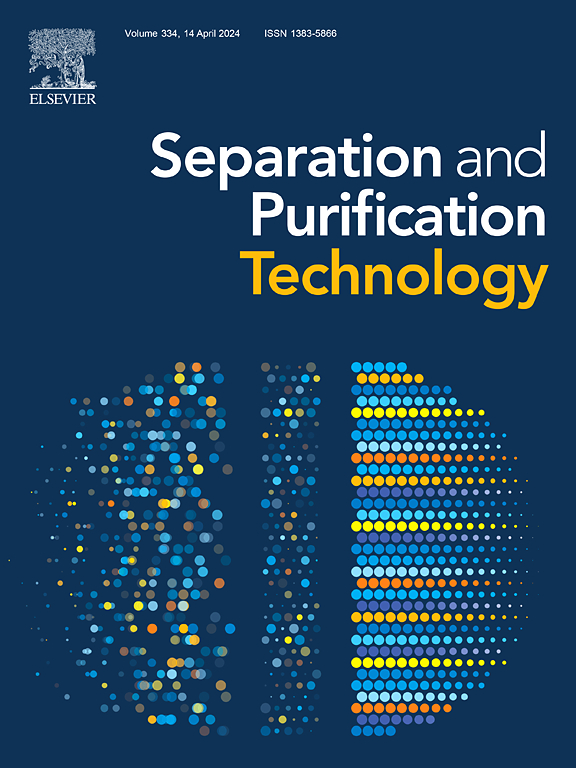Rapid reduction of chloramphenicol by sodium bicarbonate-activated biochar loaded with nano zero-valent iron: Influence of pyrolysis parameters and the key role of graphitic carbon structure
IF 8.1
1区 工程技术
Q1 ENGINEERING, CHEMICAL
引用次数: 0
Abstract
In this study, sodium bicarbonate (NaHCO3)-modified biochar (mBC) obtained at a modification ratio of 2:1 was used to load nano zero-valent iron (nZVI) for the removal of chloramphenicol (CAP). nZVI@mBC removed 98.7% of CAP within 60 min, much higher than naked nZVI (45.0%) and unmodified biochar-loaded nZVI (nZVI@BC) (50.7%). The effects of pyrolysis parameters (modification ratio (m[NaHCO3]/m[biomass]), pyrolysis temperature, heating rate, and holding time) on the ability of biochar to load nZVI were systematically investigated. The results showed that the modification ratio and pyrolysis temperature had a large influence on the loading property of mBC. The mechanism of nZVI@mBC for efficient CAP removal was explored. NaHCO3-modification promoted the formation of pore and graphite structures of biochar, and facilitated the uniform loading of nZVI. Electrochemical analysis showed that nZVI@mBC reduced CAP by direct electron transfer pathway (DET). The key graphitic carbon structure of mBC promoted the formation of iron-carbon galvanic cell, which favored electron transfer and led to better decontamination performance of nZVI@mBC. In addition, nitro reduction and dechlorination were identified as the main pathways for CAP degradation. Finally, the performance of nZVI@mBC for CAP removal in complex environments was explored to determine its environmental suitability. This study comprehensively analyzed the effects of different pyrolysis conditions on the loading capacity of modified biochar, and also elucidated the key graphitic structure of modified biochar to promote pollutant removal, which can provide a reference for the structural design of biochar-based carriers.

碳酸氢钠活化生物炭负载纳米零价铁对氯霉素的快速还原:热解参数的影响和石墨碳结构的关键作用
本文章由计算机程序翻译,如有差异,请以英文原文为准。
求助全文
约1分钟内获得全文
求助全文
来源期刊

Separation and Purification Technology
工程技术-工程:化工
CiteScore
14.00
自引率
12.80%
发文量
2347
审稿时长
43 days
期刊介绍:
Separation and Purification Technology is a premier journal committed to sharing innovative methods for separation and purification in chemical and environmental engineering, encompassing both homogeneous solutions and heterogeneous mixtures. Our scope includes the separation and/or purification of liquids, vapors, and gases, as well as carbon capture and separation techniques. However, it's important to note that methods solely intended for analytical purposes are not within the scope of the journal. Additionally, disciplines such as soil science, polymer science, and metallurgy fall outside the purview of Separation and Purification Technology. Join us in advancing the field of separation and purification methods for sustainable solutions in chemical and environmental engineering.
 求助内容:
求助内容: 应助结果提醒方式:
应助结果提醒方式:


